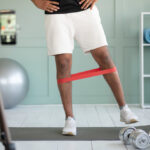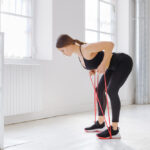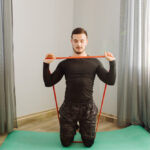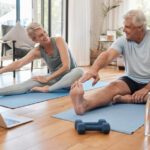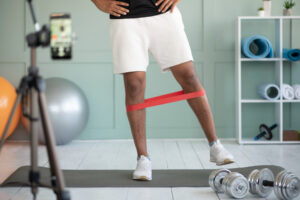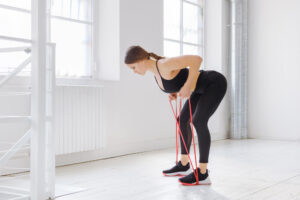Whether you’re a fitness enthusiast or a beginner looking to spice up your workout routine, understanding and incorporating compound exercises like the kettlebell squat to shoulder press can transform your fitness regime. This dynamic move not only challenges multiple muscle groups simultaneously but also offers significant boosts in strength, coordination, and calorie burn. In this comprehensive guide, we’ll explore what the kettlebell squat to shoulder press is, its myriad benefits, and how to perform it with perfect technique.
What is the Kettlebell squat to shoulder press?
The kettlebell squat to shoulder press, often referred to as the “thruster,” combines a kettlebell squat with a shoulder press into one seamless movement. This exercise starts with a squat while holding a kettlebell in front of your chest and transitions into a press overhead as you stand up.
The movement utilizes the momentum from the squat to help propel the kettlebell above your head, making it an efficient, power-packed exercise ideal for building functional strength and improving athletic performance.
Benefits of Kettlebell squat to shoulder press
Here are the crucial benefits of this exercise:
Overall health benefits
- Enhanced functional strength: This exercise mimics everyday activities, improving your ability to perform daily tasks with ease.
- Improved coordination and stability: Performing a movement that involves both the lower and upper body enhances neuromuscular coordination, crucial for balance and stability.
Muscle targeting
- Comprehensive muscle engagement: Targets your quadriceps, hamstrings, glutes, shoulders, and core, providing a full-body workout.
- Core strengthening: The core is continuously engaged throughout the exercise, which strengthens abdominal and back muscles, aiding in overall posture and core stability.
Cardiovascular benefits
- Increased heart rate: The combination of squatting and pressing increases your heart rate, offering cardiovascular benefits similar to those of a moderate cardio session.
- Efficient calorie burn: High-intensity movements like the kettlebell squat to shoulder press burn more calories in a shorter period, making it excellent for fat loss.
Flexibility and mobility
Regularly performing this exercise can lead to improved flexibility and mobility in the hips and shoulders, essential for overall joint health. Flexibility and mobility are also essential for martial arts. These kettlebell exercises can improve your Jiu-jitsu performance.
Fat Burning and Metabolism
This high-intensity workout helps in boosting your metabolism, which can lead to increased fat burn even after your workout is over.
Proper form and technique
- Starting position: Begin with your feet shoulder-width apart, holding a kettlebell by the handle with both hands at chest level.
- The squat: Lower your body into a squat, keeping your back straight and chest up. Ensure your thighs are parallel to the ground.
- The press: As you drive back up to standing, use the momentum to press the kettlebell overhead. Extend your arms fully without locking your elbows.
If you need assistance with your form, make sure to connect with our personal trainers in Concord.
Common mistakes
- Rounding the back: Always keep your spine neutral to avoid stress on your lower back.
- Incomplete movements: Ensure full squat depth and full arm extension to gain the maximum benefit from each rep.
Final thoughts
Including the kettlebell squat to shoulder press in your fitness routine is more than just adding a new exercise; it’s about enhancing your overall health, strength, and vitality. This powerful compound movement offers a plethora of benefits, from building muscle and burning fat to improving cardiovascular health and boosting metabolism. It challenges your body in a holistic manner, ensuring you gain not only physical strength but also better balance, flexibility, and coordination.
As you integrate this exercise into your workout regimen, remember that consistency is key. Start with a weight that allows you to maintain proper form and gradually increase the intensity as you become more comfortable with the movements. Always prioritize technique over speed or weight to prevent injuries and maximize effectiveness.


